Caterham Seven 160: a back to basics car for the motoring purist
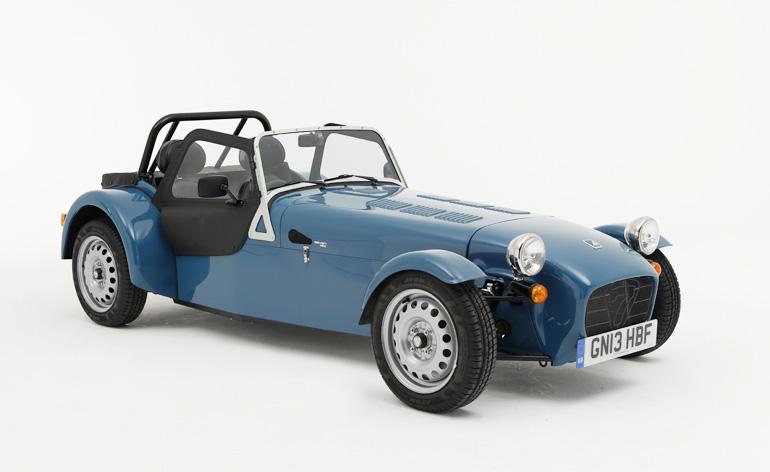
Such is the essential rightness of the Caterham chassis and steering that the company decided to dial things down for the new 160, building a car that handles beautifully without ever becoming a handful for the unwary
Caterham's new Seven 160 strips car design back to its bare essentials. Minimalism is a rare commodity in contemporary car design. The occasional concept walks the talk of a reductivist aesthetic, but the combination of onerous safety requirements and customers' insatiable demand for gadgets, gizmos and more and more power turn even the smallest city car into a lumbering giant when compared to its predecessor from three decades before.
Caterham doesn't have any issues with scale. The tiny manufacturer has been turning out bespoke variations of the classic Lotus Seven for fifty-five years, eventually acquiring production rights for the simple design in 1973. In the years that followed, the ultimate lightweight sports car has undergone countless mechanical iterations, with the tubular chassis and aluminium body panels staying essentially the same. The Seven of 2014 is a dead-ringer for its predecessor and the ethos behind the car - lightness and mechanical purity - is undiminished by the decades.
The new 160 model is even closer to its antecedents than other contemporary Caterhams. The company's model range is straightforward; add a bigger engine, charge more money. The basic car is so light that small power increments can instantly transform the way the car drives, running all the way up to the ferocious Superlight R500, which will out accelerate a Bugatti.
But such is the essential rightness of the chassis and steering that the company decided there was a good case for dialling it down and building a car that handles beautifully without ever becoming a handful for the unwary. Enter the 160. Powered by a tiny 0.7 litre Suzuki engine (usually found in Tokyo-bound Japanese microcars), the 160 has just 80hp. It also weighs in at around 500kg, so there's never any danger of feeling down on power. Unassisted steering is razor sharp, and there's undeniable pleasure in watching the open front wheels do their stuff as you turn as sharply as possible into every available bend.
The Seven's main drawback is its almost pathological aversion to basic creature comforts. Go for the cheapest option and you'll not only be assembling the car yourself but going without a windscreen, hood or heater. Even with these elements in place, the Seven is not a place for the tall or broad; so constricted is the pedal box that the big-footed must invest in bespoke driving boots. It's also noisy (hood up or down) and almost unbelievably exposed in the face of modern automotive gigantism - even the lowliest city car looms above you.
But it's also brilliant. On an open road the pleasures are visceral and immediate, the snappy steering, thrumming turbo-charged engine and slick gearbox helping keep the momentum going and enjoyment up. Even around town, the tiny scale helps with parking and positioning and adds a certain stoic romanticism to every journey. Every element is functional in the extreme, from the popper-operated 'doors' to the toggle-switch indicators, but this is a big part of its appeal. If you're able to squeeze in, you'll find the 160 is a hard place to leave.
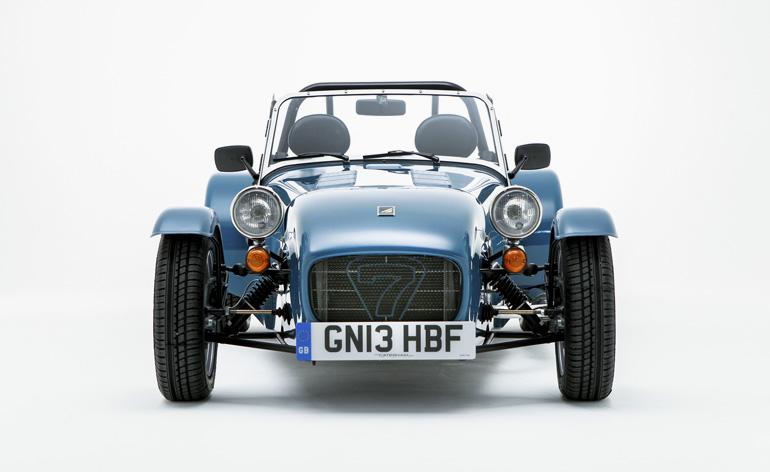
Powered by a tiny 0.7 litre Suzuki engine (usually found in Tokyo-bound Japanese microcars), the 160 has just 80hp. It also weighs in at around 500kg, so there's never any danger of feeling down on power
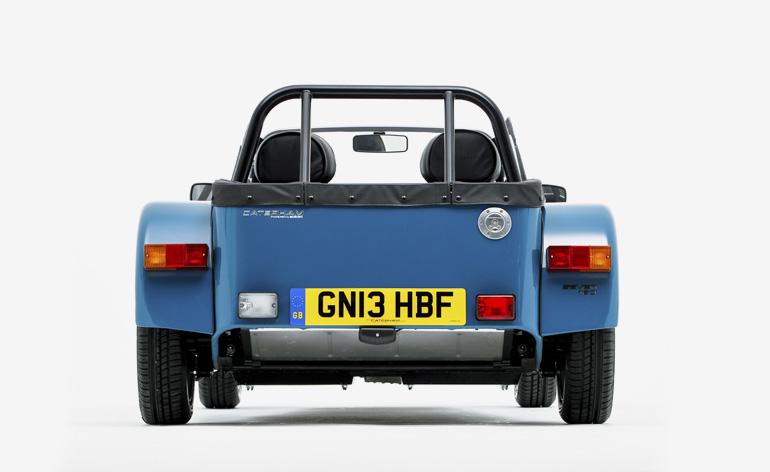
Unassisted steering is razor sharp, and there's undeniable pleasure in watching the open front wheels do their stuff as you turn as sharply as possible into every available bend
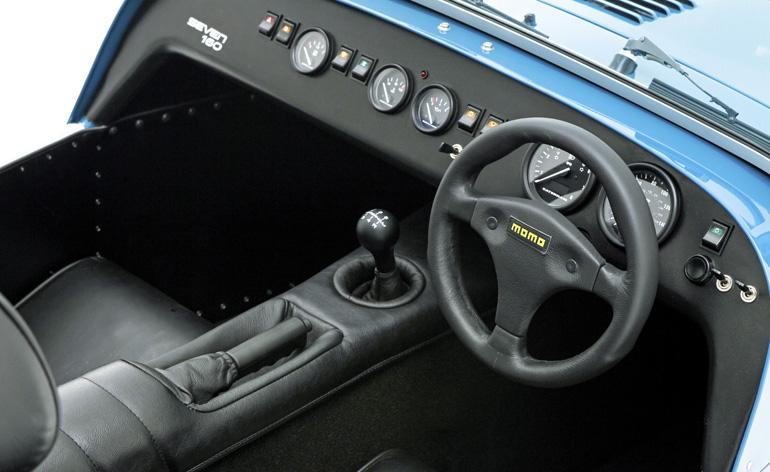
The Seven's main drawback is its almost pathological aversion to basic creature comforts. Go for the cheapest option and you'll not only be assembling the car yourself but going without a windscreen, hood or heater. Even with these elements in place, the Seven is not a place for the tall or broad; so constricted is the pedal box that the big-footed must invest in bespoke driving boots
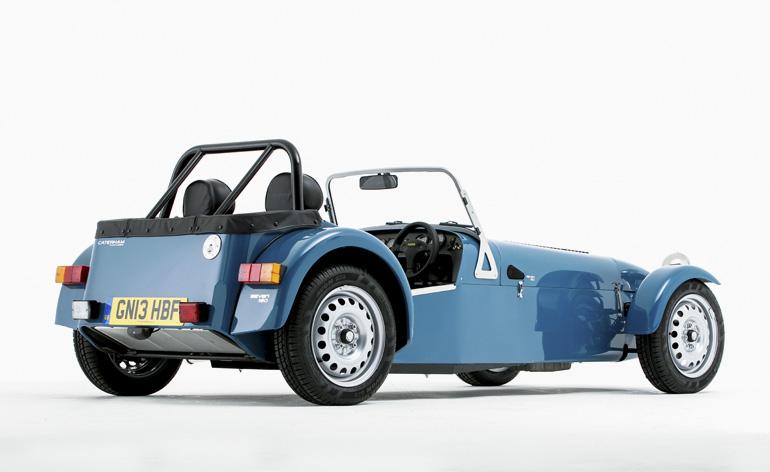
But it's also brilliant. On an open road the pleasures are visceral and immediate, the snappy steering, thrumming turbo-charged engine and slick gearbox helping keep the momentum going and enjoyment up
Receive our daily digest of inspiration, escapism and design stories from around the world direct to your inbox.
Jonathan Bell has written for Wallpaper* magazine since 1999, covering everything from architecture and transport design to books, tech and graphic design. He is now the magazine’s Transport and Technology Editor. Jonathan has written and edited 15 books, including Concept Car Design, 21st Century House, and The New Modern House. He is also the host of Wallpaper’s first podcast.
-
 Year in review: the shape of mobility to come in our list of the top 10 concept cars of 2025
Year in review: the shape of mobility to come in our list of the top 10 concept cars of 2025Concept cars remain hugely popular ways to stoke interest in innovation and future forms. Here are our ten best conceptual visions from 2025
-
 These Guadalajara architects mix modernism with traditional local materials and craft
These Guadalajara architects mix modernism with traditional local materials and craftGuadalajara architects Laura Barba and Luis Aurelio of Barbapiña Arquitectos design drawing on the past to imagine the future
-
 Robert Therrien's largest-ever museum show in Los Angeles is enduringly appealing
Robert Therrien's largest-ever museum show in Los Angeles is enduringly appealing'This is a Story' at The Broad unites 120 of Robert Therrien's sculptures, paintings and works on paper